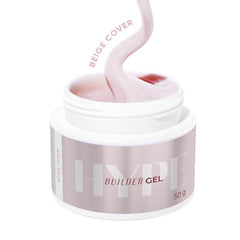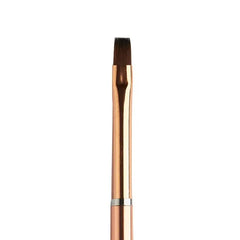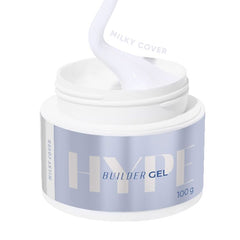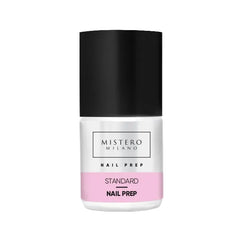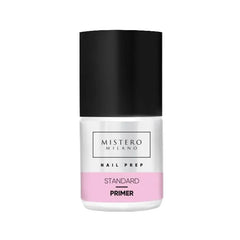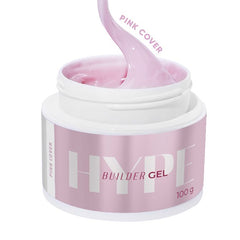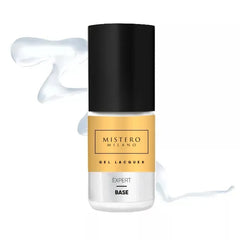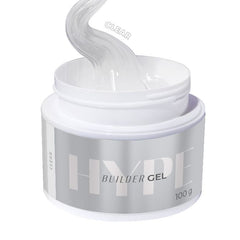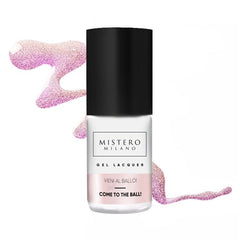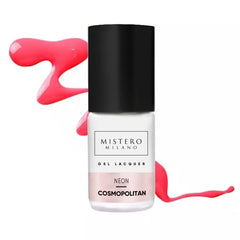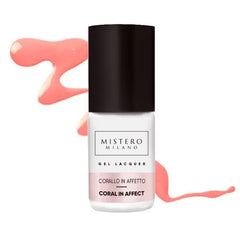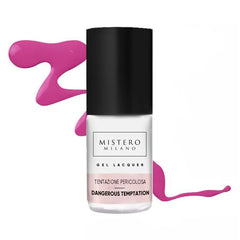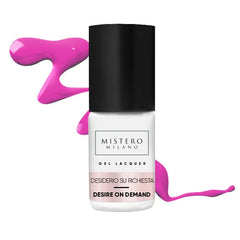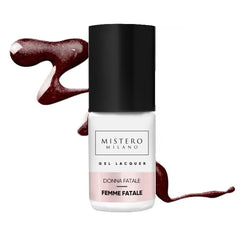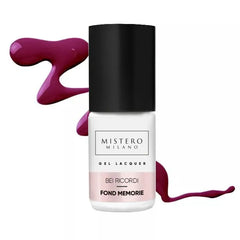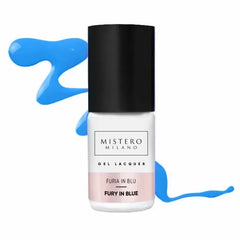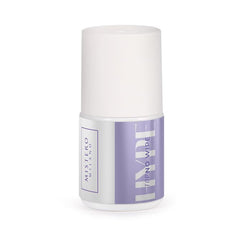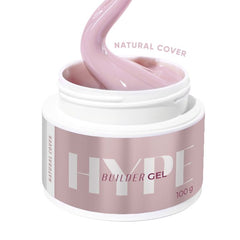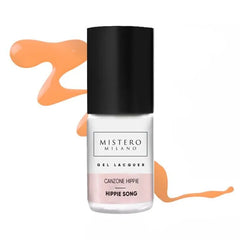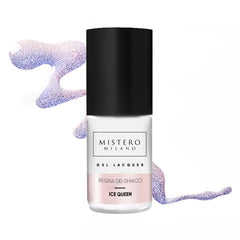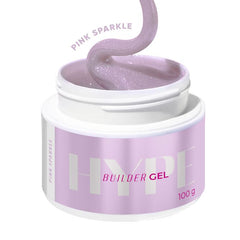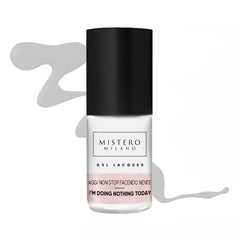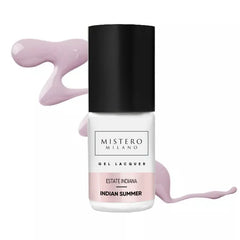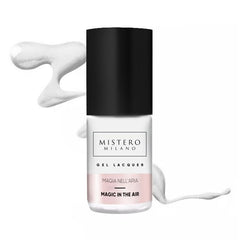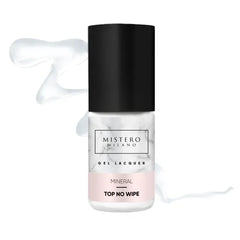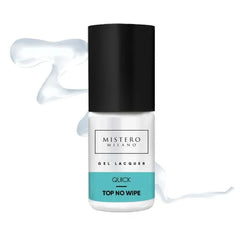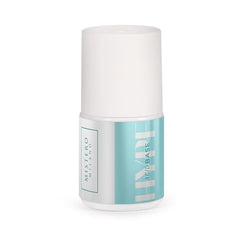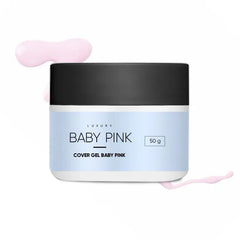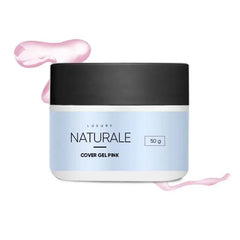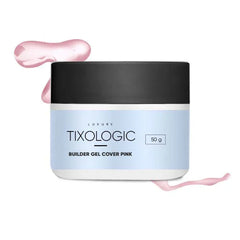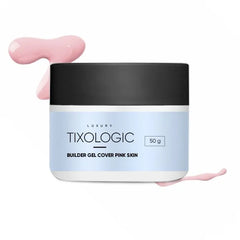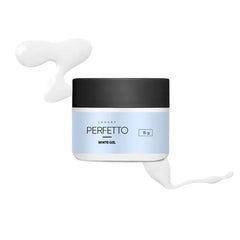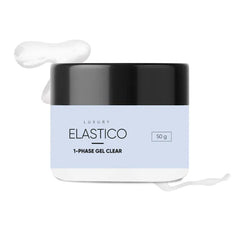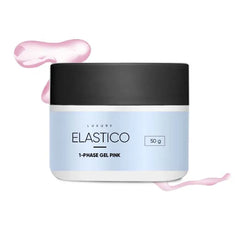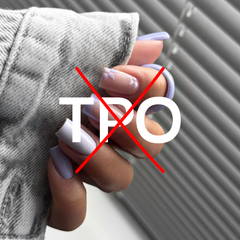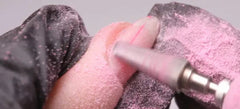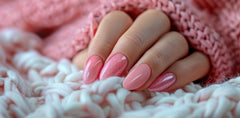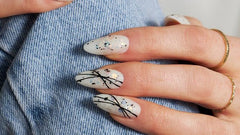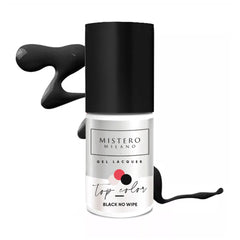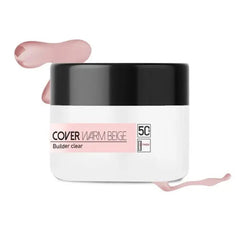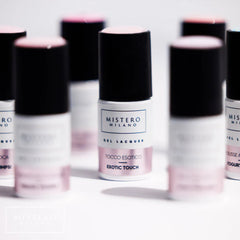UV gel
Amber D'Halluin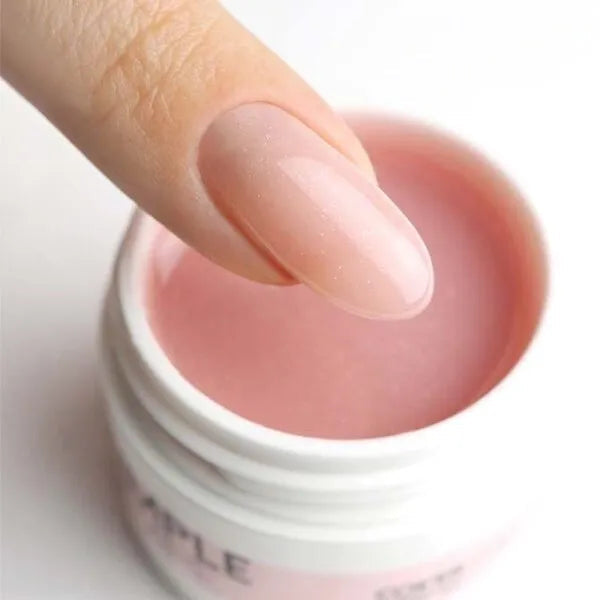
1. What is UV gel?
UV gel is a thick, liquid substance that is used to create artificial nails. Unlike acrylic nails, gel nails need to be cured under a nail lamp. In addition, they are more flexible and pliable than acrylic nails. Gel consists of short chains of molecules that connect to long chains during the curing process in a UV lamp. This process strengthens the natural nails. With the help of tips or templates, you can even extend your natural nails. That is why gel nails are the ideal solution for women with thin, short and/or brittle nails.
2. Advantages & disadvantages of gel
However, like any other product, UV gel has both advantages and disadvantages. Below you will find the most important advantages and disadvantages of gel nails.
2.1 Advantages
- Gel nails stay beautiful on your nails for up to 4 weeks without the shine fading.
- With UV gel you can extend your natural nails and make them look longer.
- Gel nails look natural.
- Gel nails are flexible and pliable, which means they are less likely to break or chip.
- Unlike acrylic nails, gel has no annoying chemical odors.
2.2 Disadvantages
- Applying and removing gel nails takes a little longer than traditional nail polish.
- To harden the gel you need a nail lamp.
- Applying gel nails requires some skills and knowledge.
3. Consistency of gel
Oligomers are a fundamental component of UV gel. Unlike monomers, which are individual molecules, oligomers are molecules that are partially linked together. To understand the benefits of pre-formed molecular chains (oligomers), it is important to first understand how UV products cure. Under the influence of UV energy, molecules form long chains with each other. The curing process occurs as soon as long chains are formed. Since a nail lamp only emits a small amount of UV energy, the curing process is inefficient and slow. As a result, acrylic nails, which are made from monomer liquid and polymer powder, cannot be cured under a nail lamp. For this reason, UV gel consists of pre-linked molecules (oligomers) that accelerate the curing process.
The thickness (consistency) of UV products is determined by the length of the monomer chains. Individual molecules (monomers) have a great deal of freedom of movement because the molecules are not linked to each other. These molecules can move in all directions, creating a liquid. UV gels, on the other hand, consist of oligomers. These molecular chains become entangled with each other, which gives them less freedom of movement. This limited freedom of movement gives the product a thickness that is comparable to a gel. The thickness of UV-curing products is usually expressed in viscosity or consistency. The consistency/viscosity of gel is determined by adding or removing additives (raw materials).
4. Is the flexibility of UV gel determined by the consistency of the product?
Oligomers play an important role in the flexibility of UV gel. Oligomers are the building blocks of UV gel and are responsible for creating the strength and durability of your gel nails.
However, not only the oligomers are important. The curing process also plays a crucial role in obtaining the desired results. It is important to follow the correct curing times, which are usually stated on the product itself or on the seller's website. If you do not cure your gel nails long enough, they can become too flexible and even lead to the development of a contact allergy.
5. What do you need to apply UV gel?
To start a gel manicure, you will need some nail tools to prepare your natural nail plate. Think of a cuticle pusher, cuticle nippers, nail file… In addition to these tools, you will also need some products, such as a gel brush , nail prep , primer , base coat , gel polish color(s) and top coat . You also need a UV/LED lamp to harden the gel mass. You also need the appropriate UV gel. It is important to use quality products for a long lasting result.
6. Which file should you use for a gel manicure?
When doing a gel manicure it is essential to use the right file. We recommend using a 100/180 file to use. This file has two different grits, each used for a different purpose. Grit 100 is used to remove gel mass or other hard artificial nails. Grit 180 is used to shape natural nails and artificial nails and to shorten them.
If you are skilled enough, you can also use the 80/100 file, which has a coarser grit than the 100/180 file. The 80 grit side is used to shape hard artificial nails (such as acrylic and polygel) or to remove them. Please note, this file should definitely not be used on natural nails.
When removing and filing gel nails, the 100/180 file is usually used. With this file, you have less chance of damaging your natural nail.
7. Apply, touch up and remove UV gel
It is very important that you apply, touch up and remove UV gel correctly. Failure to perform these actions correctly can lead to damage to your natural nails. For example, damaging the matrix can cause irregularities in the nail plate that are sometimes irreparable. In addition, there is also a risk of developing a contact allergy , mainly due to improper curing or skin contact with the nail product. So it is important to take the necessary precautions and perform the technique correctly to avoid possible damage to your nails and skin.
8. How long do gel nails last?
Gel nails can generally stay on your nails for about 3-4 weeks, but this can depend on several factors. The duration of gel nails can depend on, among other things, the growth, the condition of your natural nails, the quality of the gel and the treatment method. In order to extend the duration of your manicure, it is important that the gel nails are applied correctly. In addition, it is important to apply the gel to a healthy nail plate. If you apply UV gel to a damaged nail plate, the manicure will not last long and can even lead to damage and deformation of the natural nail plate. It is therefore essential to take the right steps to ensure that your gel nails stay beautiful for as long as possible.
9. Can you dilute UV gel?
It is strongly discouraged to dilute gel! Adding a certain liquid can significantly affect the curing process of the UV gel, causing the gel nails to no longer cure efficiently. This will cause your artificial nails to harden poorly. It is important to know that UV products that are poorly or incorrectly cured can be a major cause of developing a contact allergy. It is therefore very important to take the right steps when applying gel to your nails, and to avoid diluting gel at all times.
10. Do your natural nails weaken after a gel manicure?
When you remove your artificial nails, you will notice that your natural nails feel a bit more flexible. However, this has nothing to do with the gel used. It is because artificial nails increase the moisture content in your natural nail plate by about 10-15%. This makes your natural nails feel a bit more flexible for 12-24 hours. After this period, your nails will return to their original condition.
11. Gel nails come off
It can happen that your gel nails come loose and this can have several causes. A common cause is poor preparation of the natural nail plate, which prevents the gel from bonding properly. But also incorrect application of the nail product, a damaged nail plate or gel that is too thick can cause loosening. To prevent this, it is essential to prepare the natural nails in the right way and to apply the gel in the right way.
12. Which nail technique is better? UV gel or acrylic?
When it comes to choosing between acrylic or gel nails, it comes down to personal preference. Some prefer gel, while others prefer acrylic. However, there are other factors that can play a role in your decision. For example, acrylic nails do not require a nail lamp, which saves a few minutes per manicure. On the other hand, gel nails are more flexible than acrylic, which is why many clients find gel to be more comfortable. Most importantly, both techniques are safe for the natural nail plate as long as they are applied and removed correctly. In short, the choice between gel and acrylic comes down to personal preference and practical considerations, but both options are safe and effective.
13. Can you become allergic to gel nails?
Any nail product can be the cause of a contact allergy , not just gel. Contact allergies are caused by specific substances in nail products that our body reacts to. These allergic reactions can be caused by insufficiently cured nail products, improperly performing a manicure, or prolonged or repeated contact with the nail product on the skin.
It is important to understand what a contact allergy is and how it can be prevented, which is why we have an in-depth discussion on this topic in our blog about contact allergy.
14. Can UV gel be used for pedicures?
There are few nail stylists who offer a gel pedicure. Instead, most use gel polish for a pedicure treatment. The difference? Gel polish can be applied much thinner than gel, which gives a more natural look. This makes it easier to achieve a tight and smooth result.
15. Different types of gels
15.1 Base gel
A base gel provides a strong bond between the nail plate and the artificial nail, which prevents lifting. This is an important factor for the durability of the artificial nails. In addition, a base gel can also be used to strengthen and smooth your natural nails. It is the first step after preparing the nails and is applied before applying other building gels.
15.2 Builder gel
With a builder gel you can strengthen, lengthen and build your natural nails. This product usually has a medium-thick to thick consistency and can be transparent, but also contain color (cover gel). A builder gel is in most cases self-leveling, which means that irregularities will even out by themselves. This ensures a smooth surface and a beautiful finish. Builder gels are often used as a base for a set of artificial nails, but can also be used on their own for a natural look.
15.3 Cover gel
Cover gel is a great option to hide discolorations, imperfections and damage on your nails. A cover gel is basically just a builder gel, but with the addition of color. Usually, a cover gel has a natural tint, which makes it ideal for camouflaging imperfections on your nails. This product is often used in nail art techniques such as French manicure, baby boom and ombre. It not only provides a more even surface, but also a beautiful color that suits you perfectly.
15.4 White gel
White gel is perfect for performing various nail art techniques. It is often used for French manicure, baby booms, hand painting and other creative nail designs. A great advantage of white gel is that it has a high resistance to yellowing, thanks to the UV filters and color stabilizers present in the product. However, it is important to know that most white gels cannot be used as builder gels due to their specific properties. There are very few white gels that can also be used as builder gels.
15.5 One phase gel
A one phase gel can be used as a base, builder and top. This allows you to extend, build up and finish your natural nails in one step. Although a one phase gel can be very convenient, it should be noted that there may be a slight difference in quality compared to using a separate base, builder and top coat.
15.6 Top gel
Top gel also known as top coat, is an essential product to finish your manicure. It protects the manicure from damage, bumps and other external factors. In addition, a top gel ensures that the color of your artificial nails remains beautiful without discoloring. There are different types of finishes possible, such as glossy, matte or with glitter.


